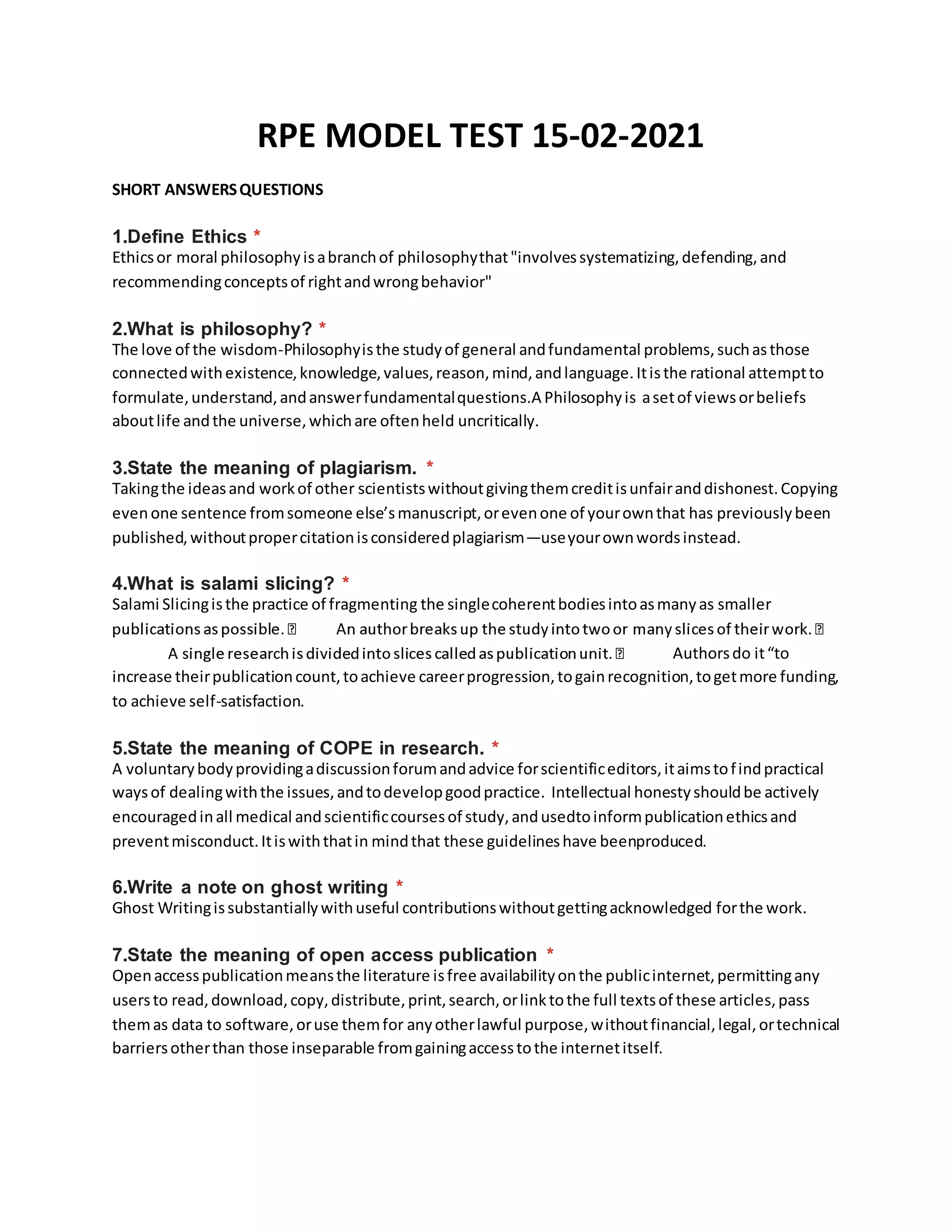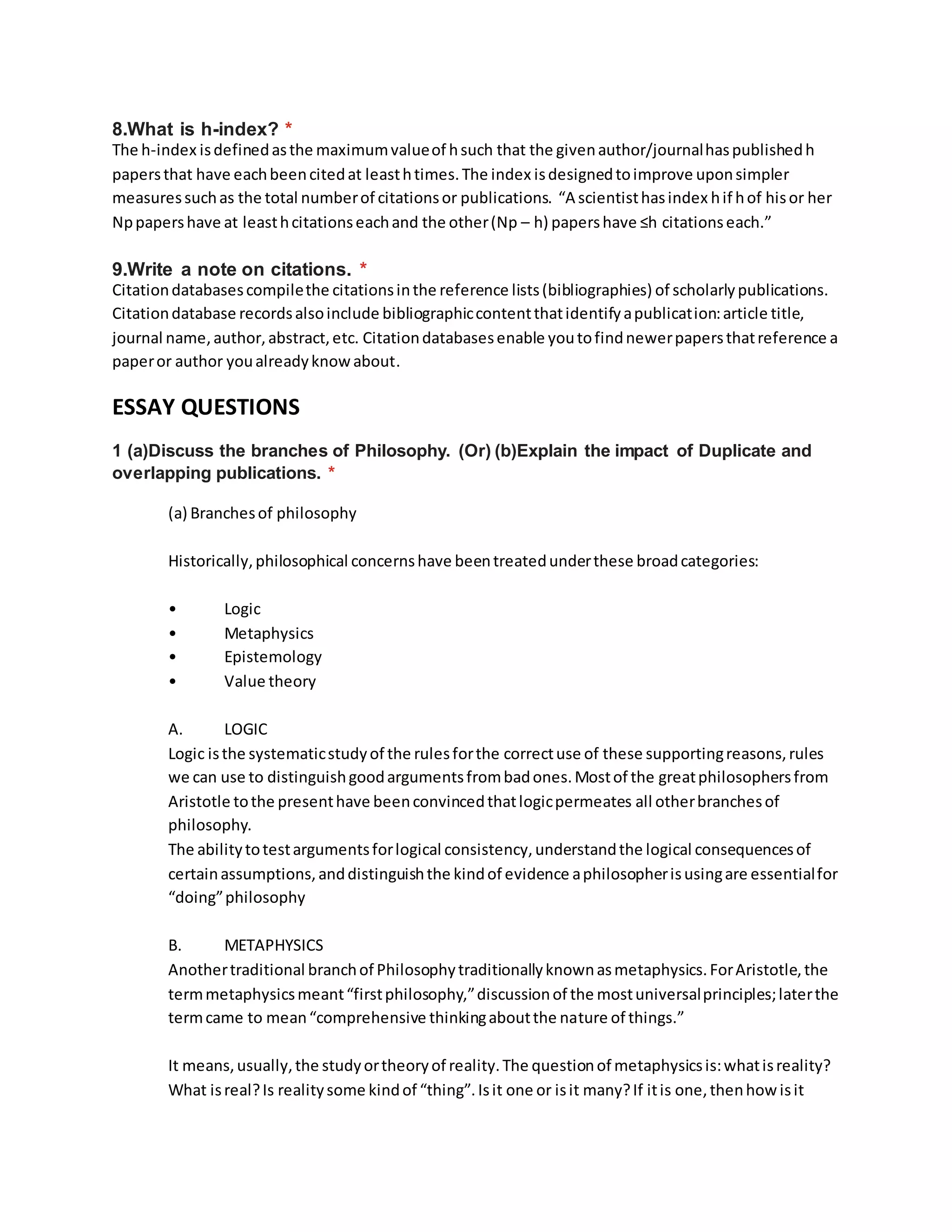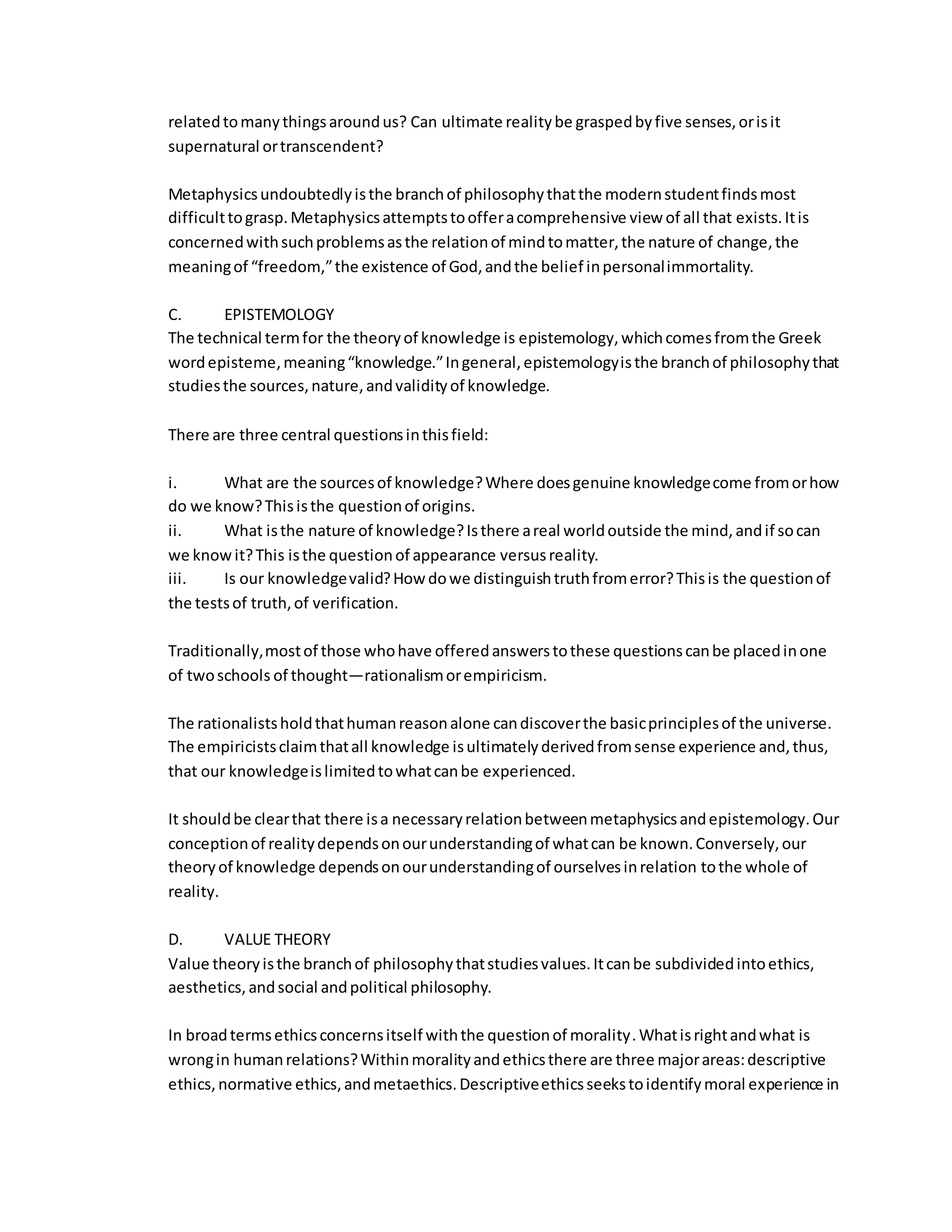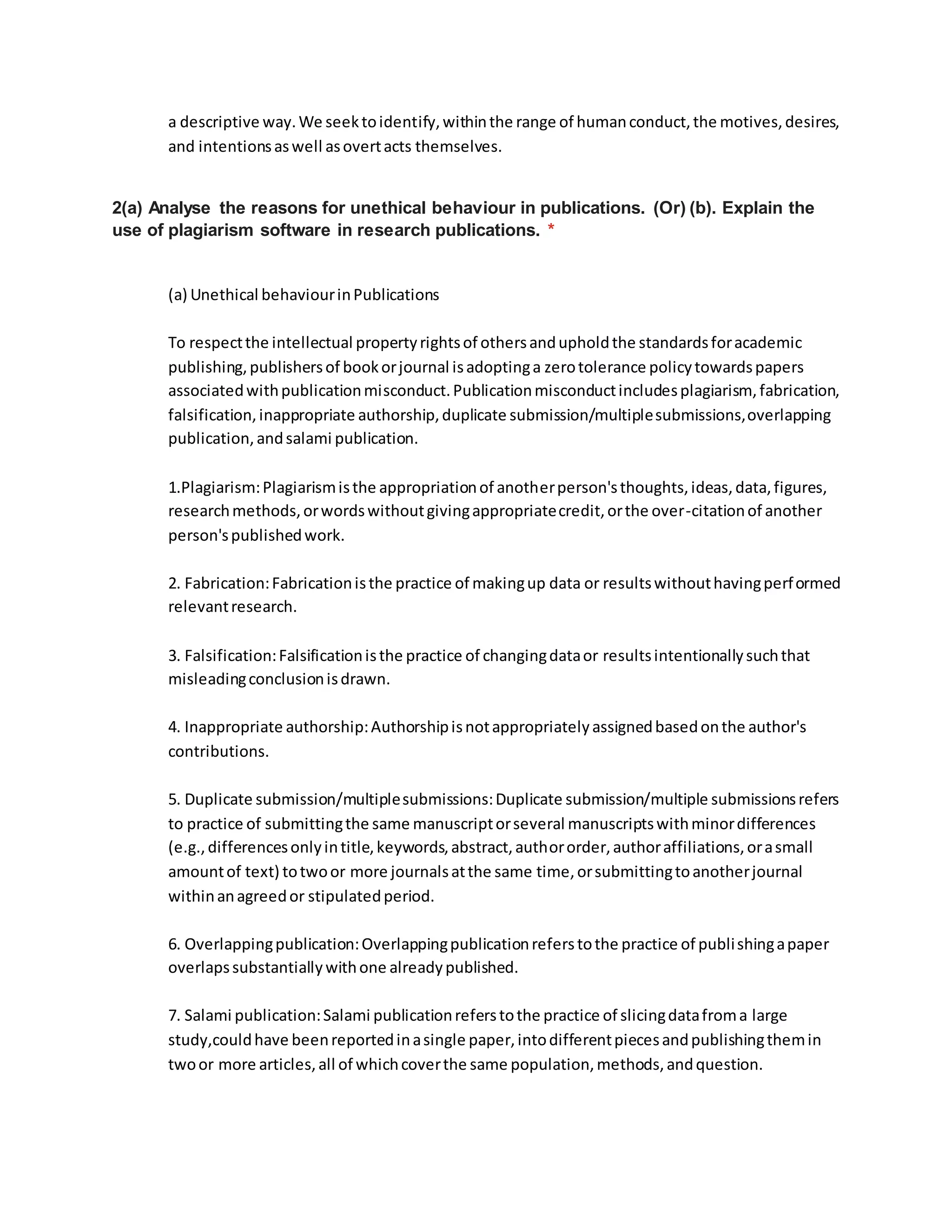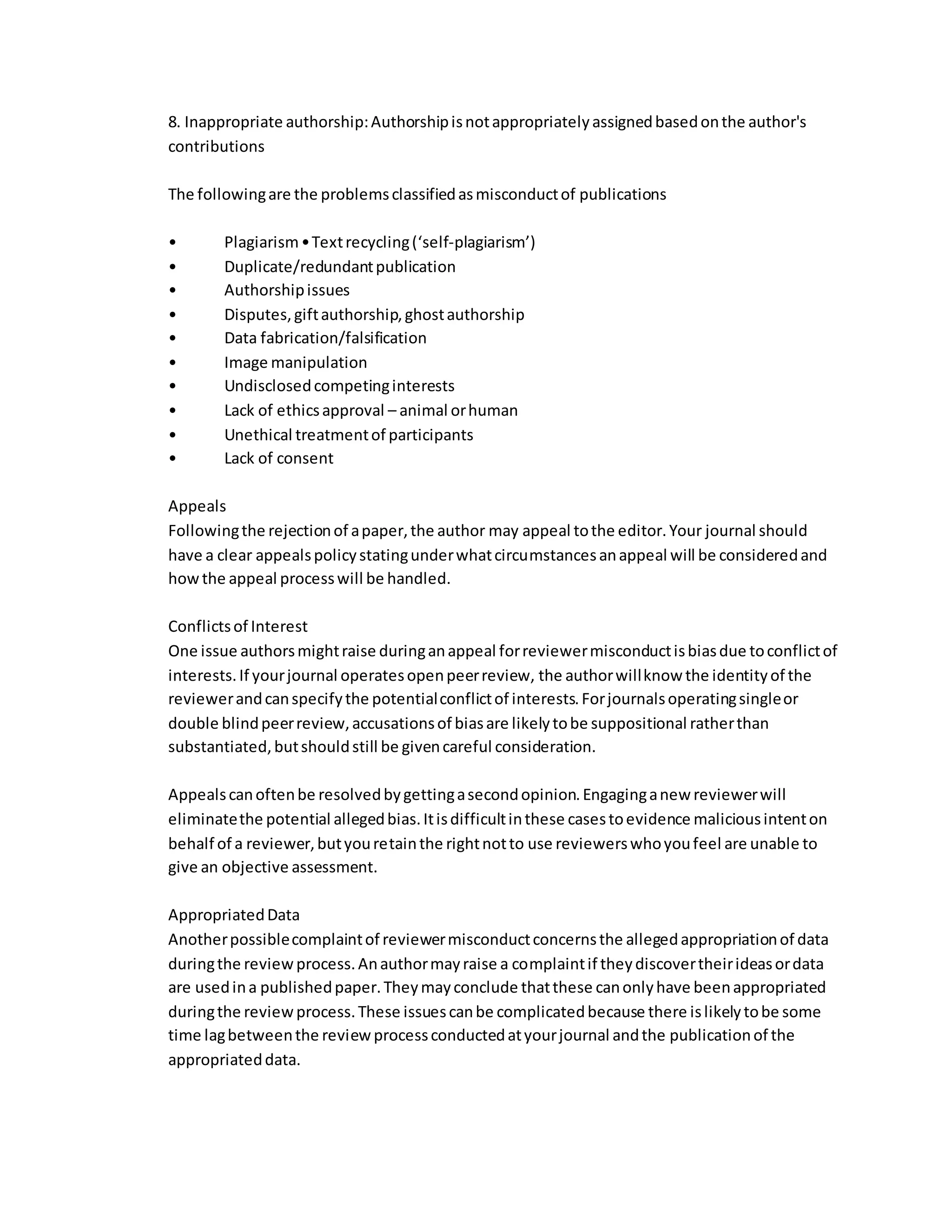This document contains short answer questions and essay questions related to research ethics. It defines key terms like ethics, philosophy, plagiarism, salami slicing, COPE, ghost writing, open access publication, h-index, and citations. It also discusses the branches of philosophy including logic, metaphysics, epistemology, and value theory. Additionally, it analyzes reasons for unethical behavior in publications such as plagiarism, fabrication, falsification, inappropriate authorship, duplicate/overlapping publications, and salami publishing. It explains how plagiarism software can be used in research to detect plagiarized content.
